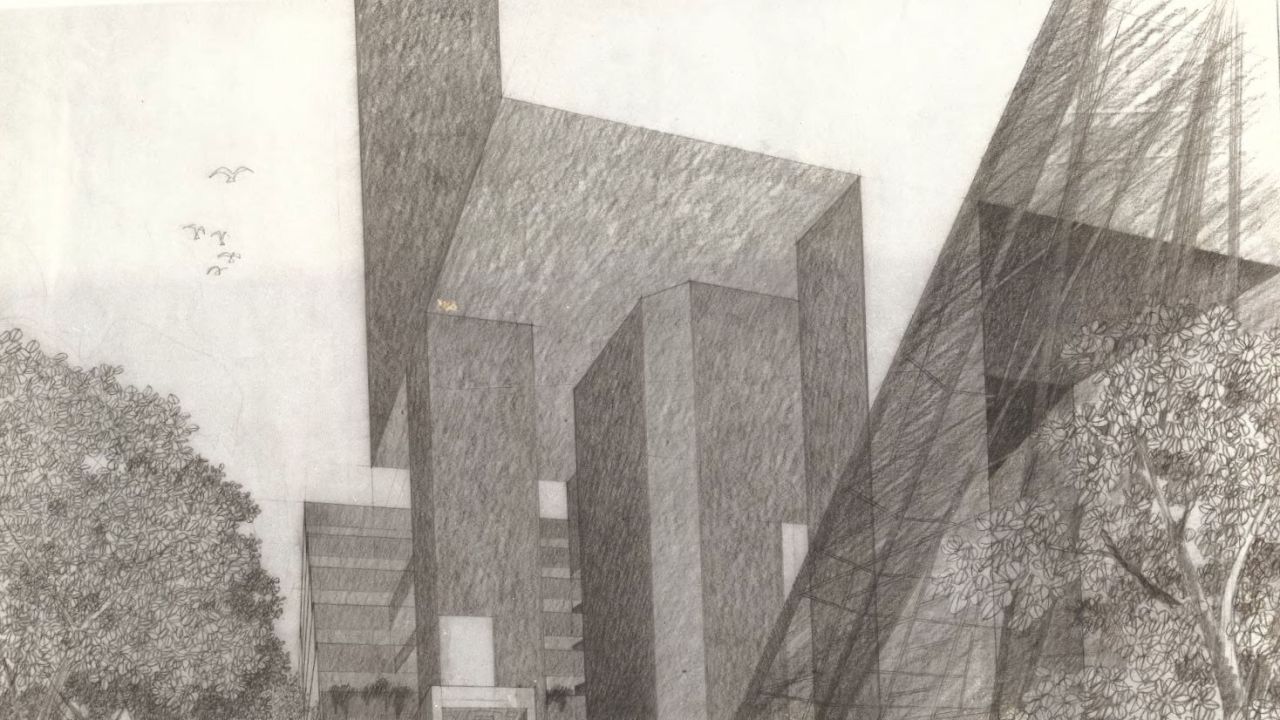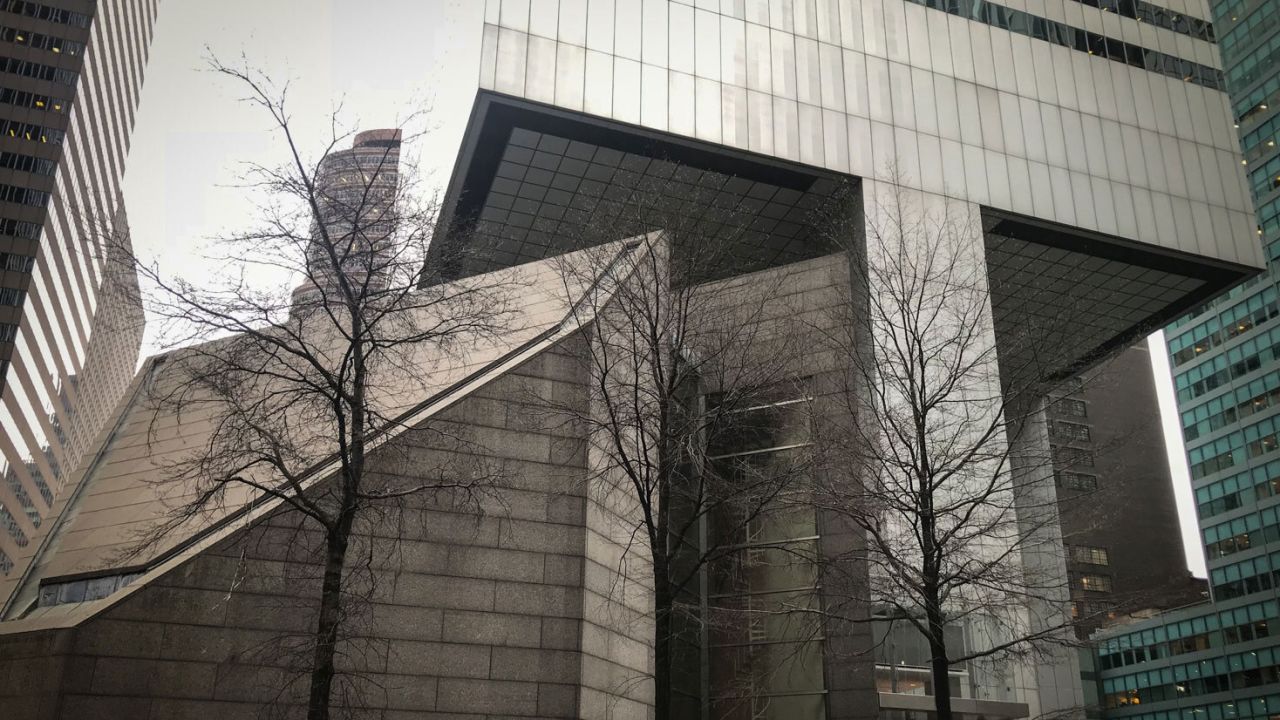On October 12, 1977, banking giant Citicorp opened the tallest new skyscraper in New York City since the early 1930s. From afar, the 915-foot tower’s distinctive sloped roof cut through the Midtown skyline like a scalpel. Close up, at ground level, its 59 floors appeared to levitate above a sunken public plaza, a generous architectural gesture to passersby.
Citicorp Center’s design was not universally loved. But the scale and ambition of its engineering were undeniable. In a review, the Times’ architecture critic Paul Goldberger concluded that the bank’s new office, despite lacking in originality, would “probably give more pleasure to more New Yorkers than any other high‐rise building of the decade.”
This prediction almost proved disastrously far from the truth. In fact, were it not for two college students who helped uncover a grave flaw in the building’s engineering, Citicorp Center might have killed thousands of New Yorkers.
Citicorp Center still stands today, though it has since been renamed 601 Lexington. But in some ways, it is not the same structure it was in 1977.
Unbeknownst to its owners, occupants and even architects, the brand-new $128-million skyscraper was far more vulnerable to wind than previously believed. If a storm knocked out the power to its stabilizing device, a strong enough gust could make it collapse — and, on average, winds powerful enough to topple the building would occur in New York every 16 years. When the tower’s engineer realized this in July 1978, hurricane season was already underway.
Within months, welders had carried out corrective work under the cover of darkness. A newspaper strike at the time meant knowledge of how close New York came to disaster remained largely hidden from the public until the mid-1990s.
Now, a comprehensive new book on the crisis, “The Great Miscalculation: The Race to Save New York City’s Citicorp Tower,” delves into the human stories behind the events of 1978 — especially that of William LeMessurier, the structural engineer who blew the whistle on himself after being alerted to potential errors in his calculations.
“You have this one man who’s put in the impossible position of discovering a terrible structural flaw with, at the time, the seventh tallest building in the world,” the book’s author, Michael M. Greenburg, said in a Zoom call. “And he knows — at least in his own mind — that disclosure of this problem was going to ruin his career.”
“But it was a real race against time,” he added.
The tower’s susceptibility to wind stemmed from its unusual design — which arose from a quirk of the Manhattan site on which it stood.
Citicorp’s attempts to buy an entire midtown block for its new office had been thwarted by a lone holdout, St. Peter’s Lutheran Church, which had occupied a corner of the proposed plot since the early 1900s. The church’s pastor stubbornly resisted a sale that might force his congregation to relocate from the Midtown East neighborhood with which it had longstanding historical ties.
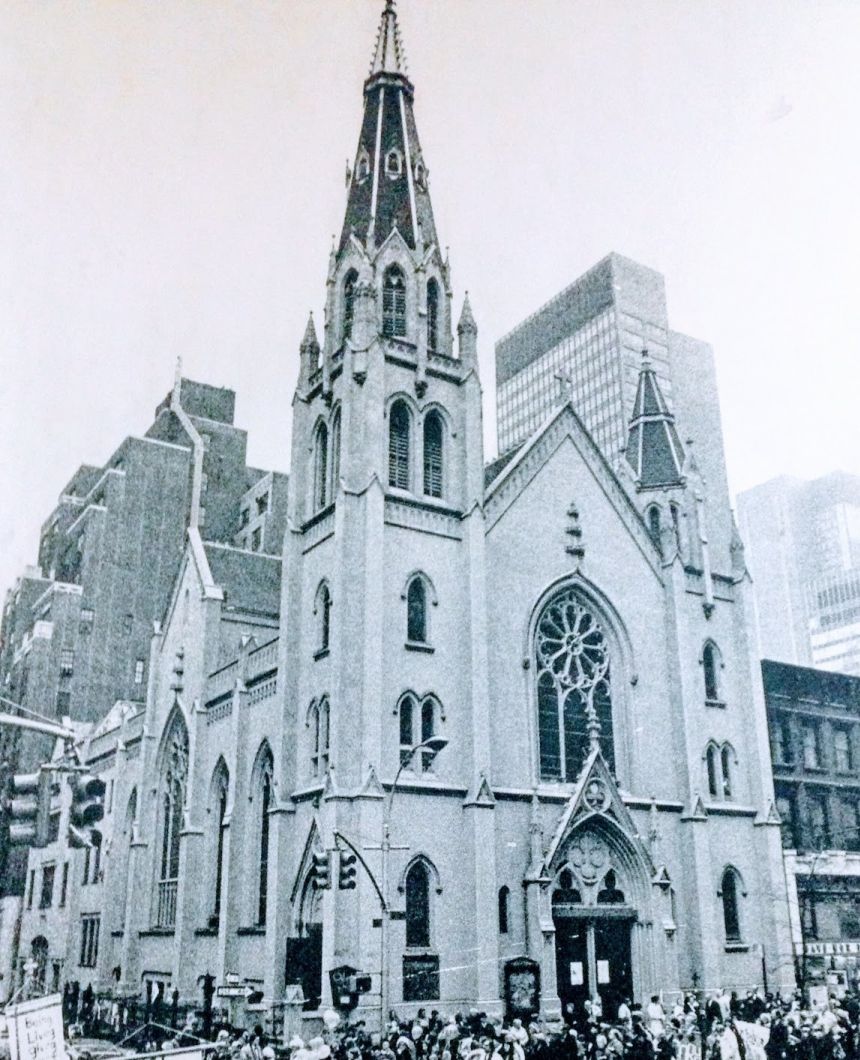
Instead, he negotiated an agreement: St Peter’s would sell its neo-gothic building and, crucially, the air rights above it, on the condition that the bank build it a new church on the same corner. Under the agreement, this new church had to be distinct, physically and architecturally, from the skyscraper.
For the tower’s architect Hugh Stubbins, who had never designed a New York high-rise, this posed a major quandary. He presented the problem to LeMessurier, a well-regarded structural engineer. Could the tower cantilever entirely over the corner housing the new church? Might they also free up space for a ground-level plaza?
Sketching on a napkin over lunch, LeMessurier began envisaging a unique answer to these questions: a skyscraper raised at not just one, but all four of its corners. In other words, a tower on stilts.
To achieve this, the building’s four main support columns would run through the middle of the building’s four faces, not its corners. This created an inherent instability that Greenburg compared to sitting on a chair with legs positioned at the middle of each side. “Now put a 59-story building on top of those legs, and you begin to understand the complexity here,” he added.
To compensate, LeMessurier developed a structural bracing system to act like an exoskeleton. A series of V-shaped chevrons, intersected by mast columns, effectively divided the building into six structurally independent segments. In each, the stress of wind and gravitational loads (those produced by the weight of the building itself) would be safely distributed, via trusses, to the columns, which would be drilled around 50 feet into the bedrock below.
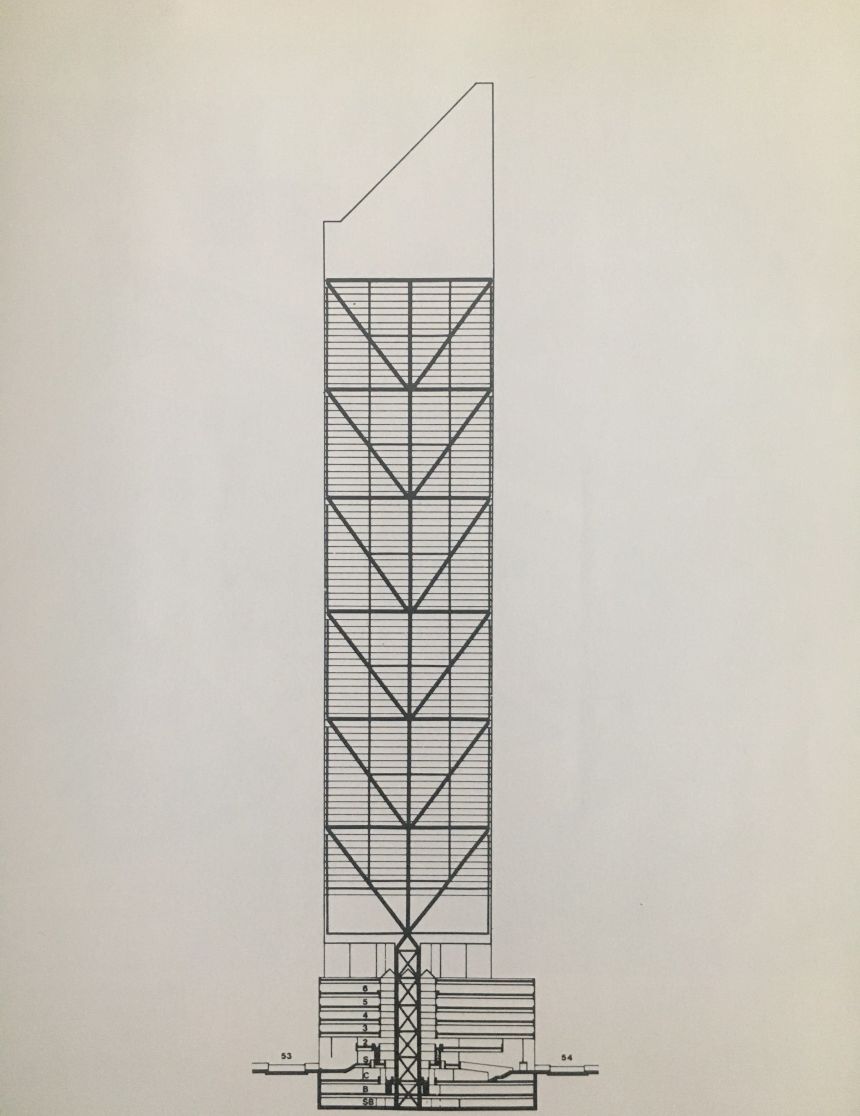
To reduce movement during strong winds, LeMessurier also proposed installing a huge counterweight, known as a tuned mass damper, in the tower’s upper floors. The stabilizing device featured a 400-ton concrete block on a film of oil that would slide in the opposite direction to the building’s motion to counteract swaying.
Calculations were completed and models tested in wind tunnels. The project broke ground in 1974 and, when it opened three years later, it proved to be a “springboard” for LeMessurier’s career, Greenburg said.
“He’s receiving awards, he’s receiving notoriety, his business is exploding and things are just going well. And then, all of a sudden, he gets this telephone call.”
Diane Hartley, a young engineering student, was starting her final year of undergraduate studies at Princeton University when Citicorp Center opened. She decided to feature the tower in her thesis on the history and impact of tall buildings.
LeMessurier’s firm helpfully provided her with drawings, plans and figures. She visited the skyscraper to see its mass damper in action. But as Hartley modeled the tower’s response to wind loads, something didn’t add up.
According to her calculations, so-called “quartering” winds — gusts hitting the tower diagonally, thus exerting pressure on two sides of the building simultaneously — produced 42% more stress than perpendicular ones. Yet the numbers given to her failed to account for this.
“It never occurred to me that I had discovered something unusual,” said Hartley, who is now aged 69, in a Zoom call. “I was trying to figure out why I was wrong.”
CNN
” data-fave-thumbnails=”{“big”: { “uri”: ” }, “small”: { “uri”: ” } }” data-vr-video=”false” data-show-html=”” data-byline-html=”
” data-timestamp-html=”
” data-check-event-based-preview=”” data-is-vertical-video-embed=”false” data-network-id=”” data-publish-date=”2021-04-23T13:43:15Z” data-video-section=”style” data-canonical-url=” data-branding-key=”” data-video-slug=”skyscrapers-history-empire-state-mxb-lon-orig” data-first-publish-slug=”skyscrapers-history-empire-state-mxb-lon-orig” data-video-tags=”architecture,building design,building planning and construction,buildings and structures,business and industry sectors,business, economy and trade,points of interest,skyscrapers,burj khalifa,continents and regions,dubai,empire state building,middle east,middle east and north africa,technology,united arab emirates” data-breakpoints=”{” video-resource–media-extra-large=”” data-display-video-cover=”true” data-details=””>
A short history of the world’s tallest buildings
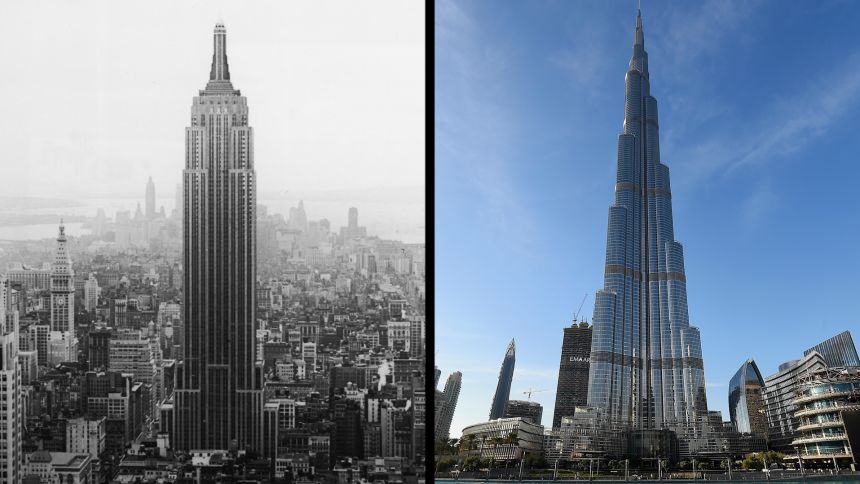
With her thesis already overdue, she rang LeMessurier’s office and spoke with one of his project engineers, who “convinced” the student that her “calculation was not correct, and the building was inherently stronger,” said Hartley, who went on to have a successful real estate career. “And at that point, being behind and waiting to graduate, I footnoted that conversation and turned the thesis in.”
Hartley all but forgot about the interaction until the 1990s, when she saw a documentary about the tower saying that a mystery student had raised the alarm. It is not known for certain whether the engineer she spoke with passed her concerns on to LeMessurier. Nonetheless, she is widely credited with beginning a chain of events that led to the discovery of Citicorp Center’s potentially fatal flaw.
However, another student, whose identity only came to light in 2011, is also thought to have contacted LeMessurier in 1978. Lee DeCarolis, then a freshman architecture student at the New Jersey Institute of Technology, has written that he directly relayed his professor’s concerns about the columns’ placement to the engineer over the phone.
LeMessurier died in 2007, and inconsistencies in his recollections mean we may never know who alerted him to the miscalculation. In Greenburg’s new book, the author diplomatically concludes that although neither student “definitively claims to have exclusively influenced LeMessurier’s actions, there is little doubt that each, to some degree, profoundly impacted what would happen next.”
LeMessurier was both an engineer and a Harvard University educator. While preparing a college lecture about Citicorp Center, he reconsidered his wind load calculations in light of the student’s — or both students’ — concerns.
New York City’s building codes did not explicitly address quartering winds. Nor was accounting for them universally practiced by structural engineering firms at the time. LeMessurier claimed that he had considered diagonal wind, yet it emerged that Citicorp Center’s unconventional bracing system was more susceptible to it than his team had grasped.
“As LeMessurier is doing the calculations, he realizes what he calls some ‘very peculiar behavior,’” explained Greenburg. He found that in a quartering wind, the wind stresses in half of the exoskeleton’s bracing members would be zero. But in the remaining half, they would rise by 40%. a figure he had not accounted for. “It becomes a matter of great concern,” the author added.
At that stage, LeMessurier still “wasn’t panicking,” Greenburg said. The engineer believed the tower was, nonetheless, sufficiently strong. But upon speaking to his steel fabricator, he discovered that the tower’s bracing had been bolted together, not welded — without his knowledge, he claimed — to save time and money. LeMessurier also realized his engineers had miscalculated how much stress would be offset by the building’s weight during quartering winds.
Armed with this new information, he determined that every splice that connected parts of the chevron bracing system should have been joined with 14 bolts. Yet each splice had only been fitted with four bolts.
“This thing is in real trouble,” LeMessurier recalled thinking, in a lecture years later. He asked his wind tunnel experts to run more tests, and the findings made his reassessment “even worse,” he added.
LeMessurier traveled with the data and his wife to their summer retreat in Maine to think the matter through. He was especially concerned about the bolted joints on the 30th floor, which he believed were most likely to fail. The building was designed with “no redundancy,” Greenburg said, meaning that the failure of just one connection would lead to total collapse — one that could have a domino effect on surrounding buildings.
Looking at weather data, LeMessurier concluded that a storm strong enough to take down Citicorp Center occurs in New York City once every 50 years. If power to the tuned mass damper failed (a plausible occurrence in a hurricane), this probability fell to once every 16 years. In a subsequent analysis of events, LeMessurier wrote there had been “a 100% probability of total collapse by the end of the century,” adding: “When collapse occurred, it would have come suddenly, without warning, and would have killed thousands of people.”
“Here I am, the only person in the world who knew,” he recounted in the aforementioned lecture. “There’s nothing wrong with the building, nobody knows anything’s wrong. There’s no cracks; the building behaves itself perfectly. So, what do you do?”
Facing legal, professional and reputational ruin, LeMessurier had little choice but to blow the whistle on himself.
“He’s emotionally cornered,” said Greenburg, who spoke with LeMessurier’s daughters while researching his book and paints a sympathetic portrait of the engineer. “He was concerned to the point of contemplating suicide.” (LeMessurier said as much himself, half-joking: “I thought briefly about driving into an abutment … but then I said, ‘I would miss the end of the story.’”)
LeMessurier briefed colleagues, collaborators and the bank to his miscalculation. One of the Twin Towers’ engineers, Leslie Robertson, was brought in to oversee the response, but LeMessurier was given the chance to fix his own mistake. His proposal was straightforward enough: weld steel plates over the bolted joints. But planning for the worst-case scenario, in the meantime, was far from simple.
Robertson hired a private weather forecasting company to provide data on any tropical storms forming in the Atlantic. Gauges measuring stresses at key points in the building were installed to alert engineers to any dangerous movement. Secret evacuation plans were made, too. LeMessurier informed city officials of his findings, and the Red Cross was consulted to understand what a building collapse in densely populated Manhattan might look like.
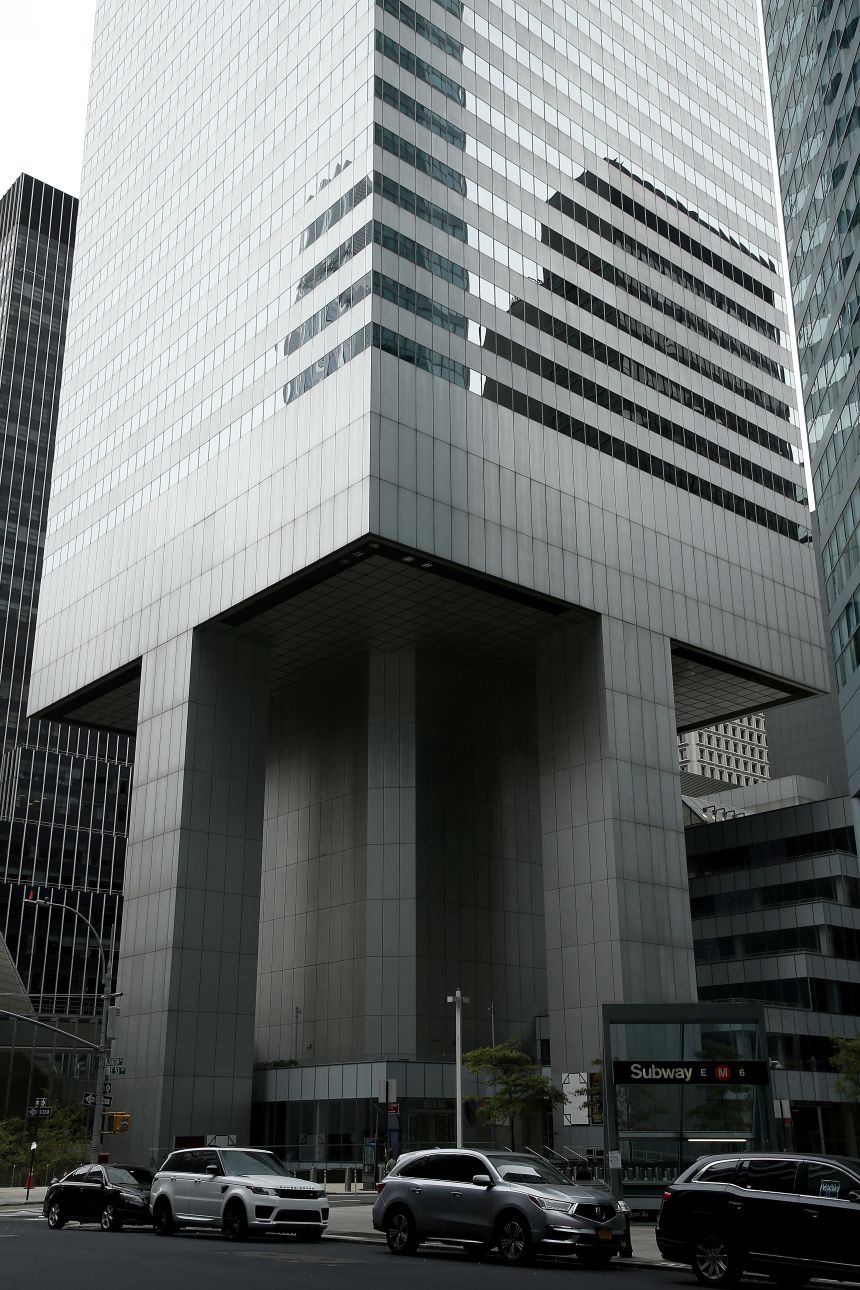
Around halfway through the repairs, Hurricane Ella formed in the Atlantic and threatened to barrel toward New York City. To LeMessurier’s relief, the storm veered away. Even then, the extent of the danger remained unknown to the public. While some reporters asked questions, that year’s newspaper strike meant the corrective measures went largely unscrutinized. They were carried out over two months, by crews working inconspicuously at night, and the parties then quietly resolved compensation and insurance claims.
While some critics have questioned the secrecy with which repairs were made, LeMessurier was “almost universally commended for his disclosure and cooperation,” Greenburg writes. The tale of Citicorp Center has since become a morality tale of professional ethics, the author added: “It’s really become the seminal story when training engineers.”
The full extent of the danger was not publicized until 1995, when the New Yorker magazine published an article by Joseph Morgenstern (whose transcripts underpin Greenburg’s book) detailing the crisis. LeMessurier was, after then, increasingly open with students, contemporaries and the press about his error. It did not prove to be career-ending, though he will always be best known for the mistake he made — and fixed.
“The Great Miscalculation: The Race to Save New York City’s Citicorp Tower,” published by Washington Mews Books/New York University Press, is available now.

